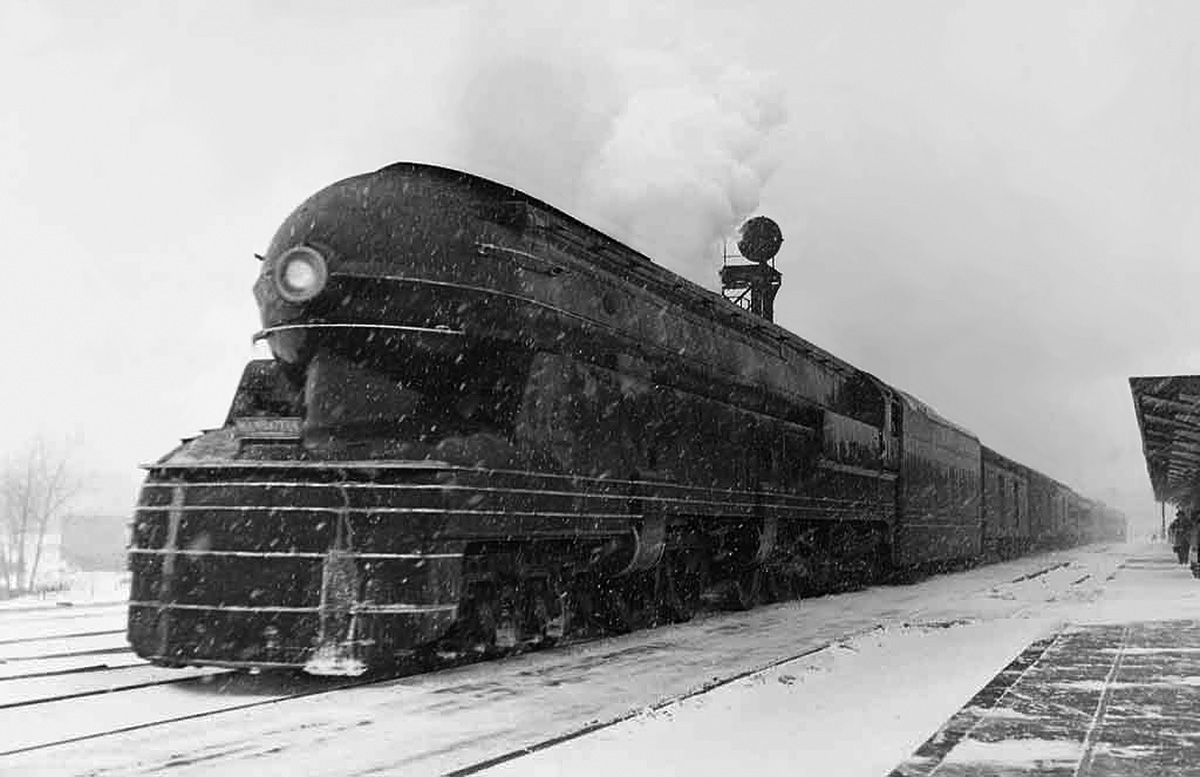I don't understand why the T1 was not classified as either a DD3 or an R2, as it bucks the PRR's own naming convention.

A bit of background on PRR's naming system for steam and electric locomotives. The first letter applies to the wheel configuration, as the letter gets larger, so does the engine. An A was an 0-4-0, a B was an 0-6-0, a C was an 0-8-0, a D was a 4-4-0, an E was a 4-4-2, an F was a 2-6-0, a G was a 4-6-0, and that's where it splits and gets a little weird. Now, articulated engines assumed it was two of a class back-to-back. So a DD1 electric, with a 4-4-4-4 or 2-B-B-2 wheel arrangement was two Ds (4-4-0s) back-to-back. The GG1 was a 2-C-C-2, so it was two G 4-6-0s. A 2-8-8-2 was an HH1 because it was two 2-8-2s back-to-back. A 2-8-8-0 was an HC1 because it was a 2-8-0 and an 0-8-0.
Then number is typically the iteration of that wheel arrangement. So an H8 was the 8th class of Consolidations that PRR bought, while there was only one version of Decapods so you had an I1. But there were outliers. For example, the P5 electric was the only 4-6-4 wheel arrangement and there were no P1/2/3/4s ever built. The B1, a 0-C-0 electric switcher, was built after some of the Bx 0-6-0 steam switchers.
And then the suffix denoted important stuff like whether it had had a significant rebuild, or whether it was superheated or not. Like an I1sa. The s meant that it was superheated. The a means it had been rebuilt once, when they had stokers added and the cutoff changed and a revision to the amount of flues and superheater elements. There was an M1 Mountain, and then the M1a was an M1 that had a new one-piece cylinder saddle, an additional air compressor and a Worthington feedwater heater, and the M1b was an M1a that had firebox circulators added and the boiler pressure increased. The "s" for superheater was dumped on later engines, like the M1 and the J1 because by that point it was pretty much a given that they were superheated.
So, why was the T1 4-4-4-4 classed as class T? That's the same wheel arrangement as a DD1 and DD2 electric, so why not class the T1 as a DD3? They had no issue grouping electrics and steam under the same class letter, and they had the same wheel arrangement. I suppose perhaps it was that the T1 was not articulated, while the DD electrics were.
In that case, the R1 was a 4-8-4 or 2-D-2 electric. Non-articulated, two unpowered lead axles, four powered axles and two unpowered trailing axles. Well, they aren't the same wheel arrangement, you say, the T1 is a 4-4-4-4 and the R1 is a 4-8-4. Ahh, but the division of wheels didn't seem to matter to PRR, just the total count and whether it was articulated or not. Consider, the Duplex 6-4-4-6 and the turbine 6-8-6, both classified under the S class, S1 and S2, respectively. Or the Q1 4-6-4-4 and the Q2 4-4-6-4. Since they were rigid-frame, non-articulated engines, the PRR counted them as 4-10-4s, no matter how the wheels were split up. So in that case, the T1's Duplex 4-4-4-4 should have counted as a 4-8-4 and been classified as an R2.
Since everyone involved in that decision is dead, I would guess that PRR probably wanted to emphasize how new and innovative and game-changing the T1 was. They did not want to lump it in with the DD1 (a good but ancient jackshaft and side-rod driven electric), the DD2 (a lame-duck prototype for a stillborn expansion) or the R1 (a prototype that lost out to the GG1).























































